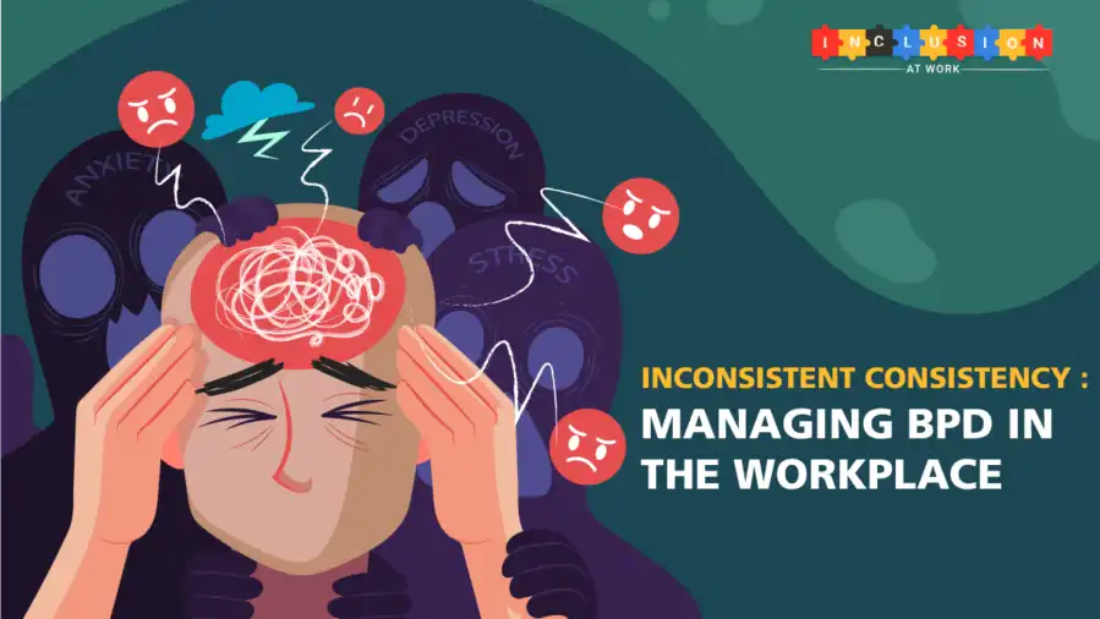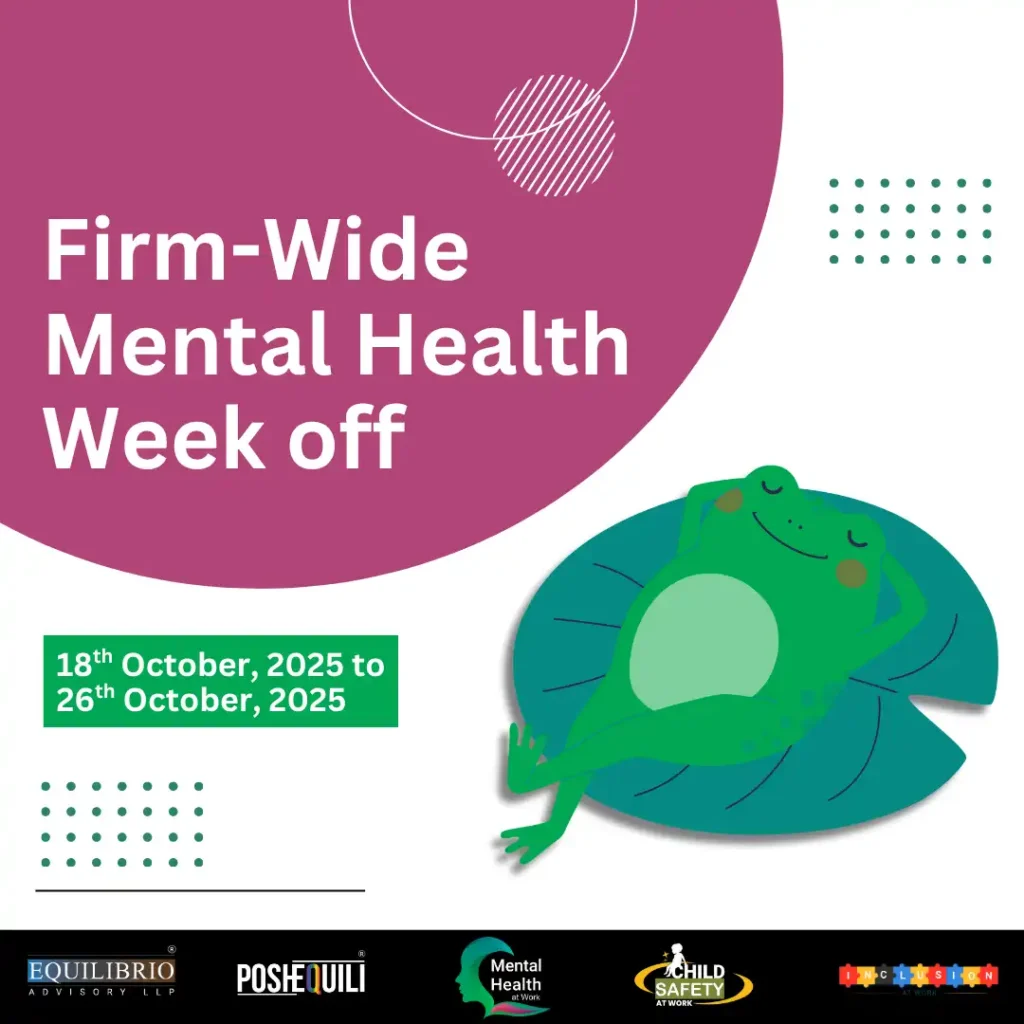Borderline Personality Disorder (BPD) is a mental health concern characterized by patterns of emotional instability, low self-esteem, insecurity, impulsivity, and impaired interpersonal relationships. BPD Awareness Month, observed in May annually, is a time dedicated to drawing attention to understanding the nuances of BPD, and promoting the dialogue on ways to reduce the stigma surrounding this condition. It provides an opportunity for individuals, organizations and communities to come together to raise awareness and promote mental well-being through various activities and campaigns.
Being a complex mental health concern, BPD is often accompanied by intense stigma, leading to significant challenges for those diagnosed. Increasing awareness regarding the symptoms of BPD, can significantly lead to early diagnosis and better support required for mental health care and wellness. Moreover, educating the public through various platforms would lead to better clarity and reduced misconceptions, and help lessen the overall stigma surrounding mental illnesses.
Individuals with BPD can often feel emotional dysregulation, rejection sensitivity dysphoria (fear of rejection and abandonment) and indulge in chronic risky or harmful behaviour. This can often manifest as toxic interpersonal dynamics. BPD often gives way to a distorted self-image, which can translate into anxiety, depression, insomnia and often leads to the presence of eating disorders. Severe emotional distress can also lead to feelings of suicidal ideation, when there is a lack of healthy coping mechanisms and/or adequate support. They can additionally indulge in various forms of self-harm.
STIGMA ASSOCIATED WITH BORDERLINE PERSONALITY DISORDER (BPD)
A superficial understanding of BPD, coupled with social biases like ableism and sexism often leads to stigma surrounding BPD. This stigma is multifaceted and manifests in various harmful ways, including (but not limited to) mislabelling, overdiagnosis, and workplace adversities. Those diagnosed end up being frequently misunderstood, demonized, and feared to be inherently problematic or dangerous. This stigma often results into a negative portrayal of the people, adding to their isolation and emotional distress.
Owing to the lack of awareness and overlapping symptoms or biases in diagnostic processes, people with BPD are sometimes inaccurately labelled as “manipulative,” “attention-seeking,” or even confused with other mental health concernslike schizophrenia or Narcissistic personality disorder (NPD). Such misdiagnoses can delay appropriate treatment and exacerbate stigma. The persistence of this societal stigma further takes a dark medical turn with the overdiagnosis of BPD among those assigned female at birth (AFAB). This overdiagnosis is partly due to gender biases in the mental health field, where emotional expressiveness and rational sensitivity are more likelyto be pathologized in women than in men. Consequently, individuals other than AFAB persons who might have other mental health concerns are sometimes inaccurately diagnosed with BPD, leading to inappropriate treatment plans.
BORDERLINE PERSONALITY DISORDER – TOOL FOR DISCRIMINATION:
Due to pervasive stigma and misunderstandings about the disorder, BPD often becomes a tool for discrimination, both consciously and subconsciously. Consciously, it involves overt actions such as derogatory comments or refusal to engage with individuals diagnosed with BPD. Subconsciously, it may involve microaggressions such as patronizing remarks or dismissive body language. It may also include avoiding treatment of persons with BPD, deeming them as “treatment-resistant” or too challenging, affecting not only the quality of care provided but also exacerbating a sense of rejection and abandonment.
Sadly, these biases leading to discrimination often spill over to family and professional settings too. People with BPD often experience estranged relationships, fearing potential conflicts for being perceived as overly dramatic or difficult. This failure to provide active support often leads to emotional distancing and withdrawal from family members and partners who do not truly understand the condition. In professional settings too, individuals with BPD face subtle forms of discrimination, such as being unfairly overlooked for promotions or being the target of the office gossip, facing hostile work environments.
BORDERLINE PERSONALITY DISORDER – CULTURAL EXAMPLES HIGHLIGHTING THE BACKLASH FACED
To keenly dissect the stigma deeply intertwined with a BPD diagnosis, we can look to culture and pop media. In the highly publicized divorce proceedings between high profile celebrities Johnny Depp and Amber Heard, information about Heard’s mental health, including reports of her diagnosis with BPD, were revealed. This revelation sparked a polarized public reaction, with the media painting her as unstable and manipulative, piggybacking on her mental health concern. It was alleged that Depp’s legal team and supporters weaponized her BPD diagnosis as a tool to undermine the credibility of the charges she brought against Depp, implying that her emotional volatility made her less trustworthy.
This scenario mirrors a previous instance in popular culture, where pop star Britney Spears’ was heavily scrutinized when she shaved her head in a beauty salon, an act caught by paparazzi. Amid many speculations of BPD, the media sensationalized this event, directing ableist slurs like “crazy” towards her and questioning her capabilities in various aspects of her life, including her career, parenting, financial management, and even her reproductive rights. The intense focus on her mental health struggles, possibly including BPD, created a public perception of instability, overshadowing her professional accomplishments and impacting both her personal and professional life.
BORDERLINE PERSONALITY DISORDER (BPD) IN THE WORKPLACE
At the outset, individuals with BPD may experience a fluctuating sense of self, which can translate to inconsistency in their job roles and career goals. For starters, colleagues and supervisors may have limited understanding of BPD, potentially leading to misunderstandings and conflicts. Organizations that are without targeted support mechanisms for individuals with BPD can contribute in exacerbating BPD symptoms, heightening emotional instability and distress.
This emotional volatility can, in turn strain interactions with colleagues and supervisors making collaboration challenging due to heightened sensitivity to criticism. Such “inconsistency” in maintaining a steady performance may impede career development and progression.
Individuals with BPD often exhibit emotional reactivity, known as “splitting”; it refers to the tendency to view people as either entirely good or entirely bad, which is often due to an internalized defence mechanism against feelings of abandonment or rejection. This struggle with emotional regulation can lead to an inability to holding stable interpersonal dynamics and lead to challenges at the workplace.
To support employees with BPD, companies can implement neuroplasticity and mental wellness initiatives, incorporating continuous awareness and training to promote collaboration and emotional regulation. Flexible work arrangements and inclusive policies further contribute to a more accepting and supportive workplace environment, benefiting not only individuals with BPD but also enhancing overall productivity and understanding among colleagues.
SUGGESTIONS AND THE WAY FORWARD
In today’s fast paced lifestyle, pervasive emotions like frustration, loneliness and failure are increasingly common, often brushed off as normal or attributed to mere bad luck. This passive sense of acceptance can be dangerous, as it does not push people to seek early diagnosis, even though such emotions could signal to a larger concern, such as BPD.
Workplaces can take certain measures to make themselves more supportive and create a sense of belonging for individuals with BPD. Some of them are as follows:
- There should be awareness campaigns targeted towards mental health concerns, particularly BPD and its implications. Campaigns should also focus on destigmatizing BPD and looking at its real human cost.
- Organizations should have inclusive anti-harassment/anti-discrimination policies that prevent discrimination of employees based on neurodivergence and other mental health concerns.
- Organizations can make space for provisions and accommodations that support neurodivergent employees. For instance, well-timed breaks, inclusive communication, in-house counselling, or other mental health-related financial support, empathetic and confidential mentorship, provision for mental health leaves, etc. all go a long way to foster a sense of inclusion and belonging.
- Workplaces can hold sessions on the role of emotional regulation in workplace communication, that focuses on sustainable ways of conflict resolution.
- Conversely, they can organize anonymous story telling sessions, allowing individuals to share their experiences of discrimination across various settings. Thus humanizing mental health and leading to more acceptance.
- Organizations must prioritize continuous professional development through mandatory courses, workshops, and training initiatives that fosters cognitive flexibility.
- Infrastructure should be present for regular training programs that focuses on consistently disseminating informational brochures and flyers on BPD which can help in sustaining awareness and make neuro-affirmative approach part of the larger work culture.
- To keep employees engaged in the conversation, collaborative and creative activities that prompt employees to think critically and solve problems in role-play based situations should be promoted.
- Hosting webinars focused on workplace support for individuals with BPD, complete with breakout room discussions for smaller group discussions and interactive polls to facilitate meaningful participation and knowledge exchange among participants should be promoted.
By introducing diverse and compassionate narratives, workplaces can cultivate empathy, healthy curiosity, initiate dialogues, and develop policies aimed at creating and nurturing supportive environments.
—– Written by Snehal Khemka and Usri Basistha
 Cart is empty
Cart is empty 



